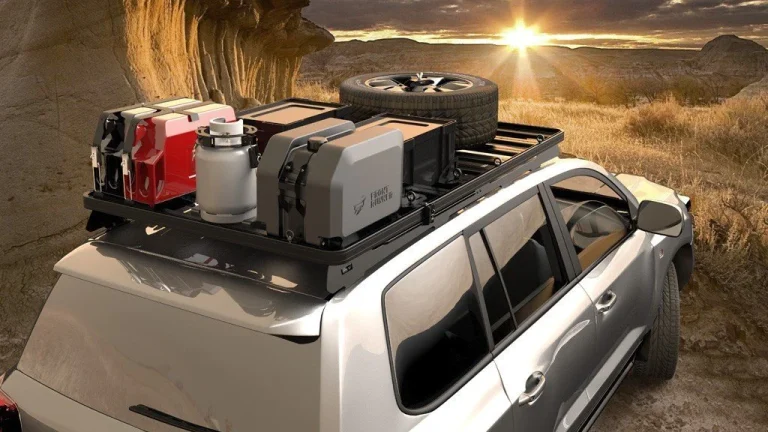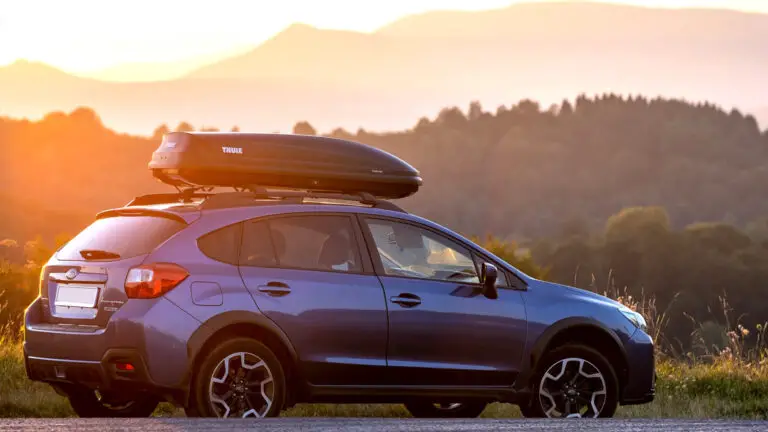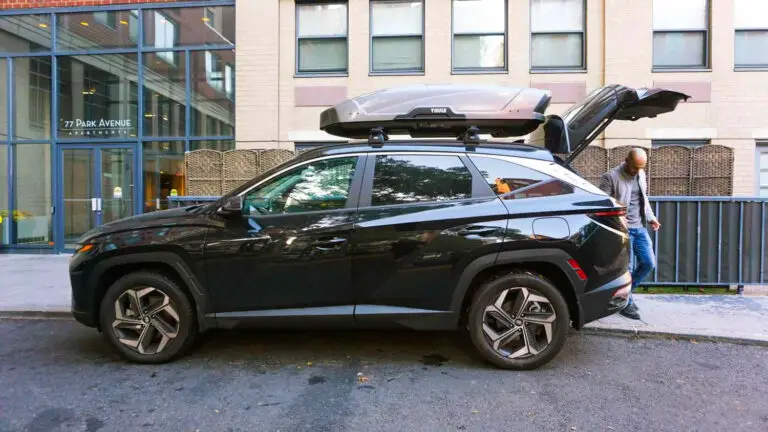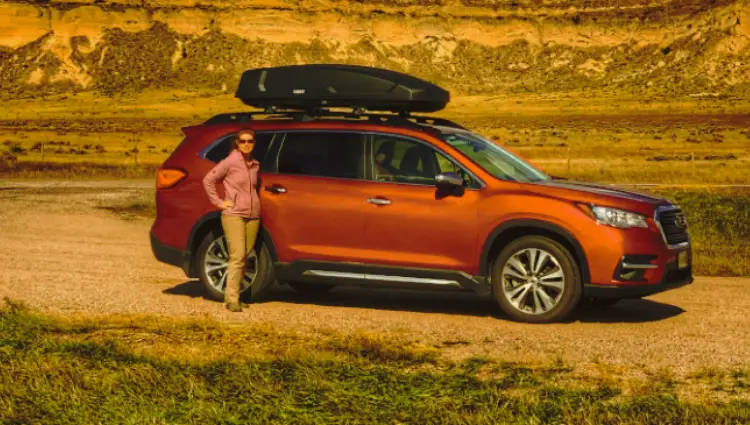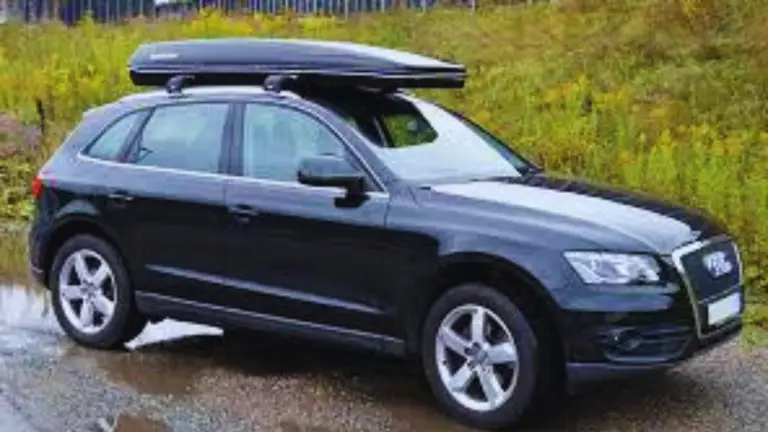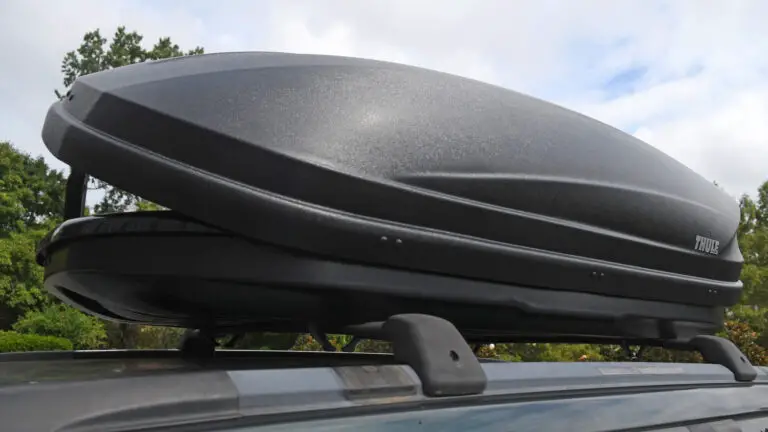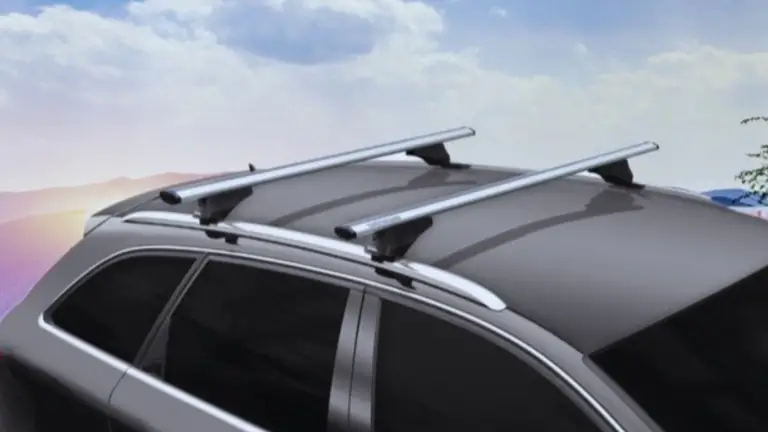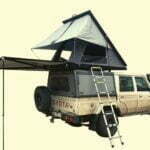Roof rails vs roof racks: Find out which option is ideal for your vehicle’s cargo-carrying needs. Our comprehensive guide covers everything from mounting crossbars to choosing the perfect carrier and cargo box for your adventures.
When it comes to expanding your vehicle’s cargo carrying capacity, you have two main options: roof rails or roof racks. But what’s the difference between roof rails and roof racks, and which one is the right choice for you? In this comprehensive guide, we’ll explore the key differences between the two and help you decide which car roof transport option is best suited for your needs.
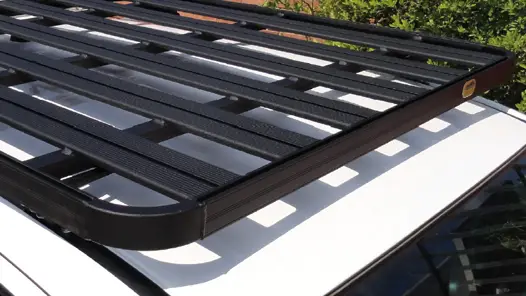
Table of Contents
ToggleWhat are Roof Rails?
Roof rails are mounted along the length of a car’s roof, running parallel to the vehicle’s sides. They are a design feature that comes pre-installed on many SUVs and station wagons, acting as a mounting point for various types of cargo carriers, like roof bars and crossbars.
Roof rails run along the length of the car, providing a secure and stable foundation for attaching roof racks, cargo boxes, bike racks, and other carriers. They can also be used to carry bulky items such as kayaks, skis, and camping gear.
What we like
- Can be more affordable compared to roof rack systems.
- Often compatible with a wide range of vehicles.
- Requires minimal assembly or can be factory-installed.
- May have a lower profile, resulting in better aerodynamics.
What we don't like
- Limited in terms of customization options.
- May have a lower load capacity compared to roof racks.
- Provides a specific base for attaching certain carriers.
- May not be suitable for heavy-duty or large items.
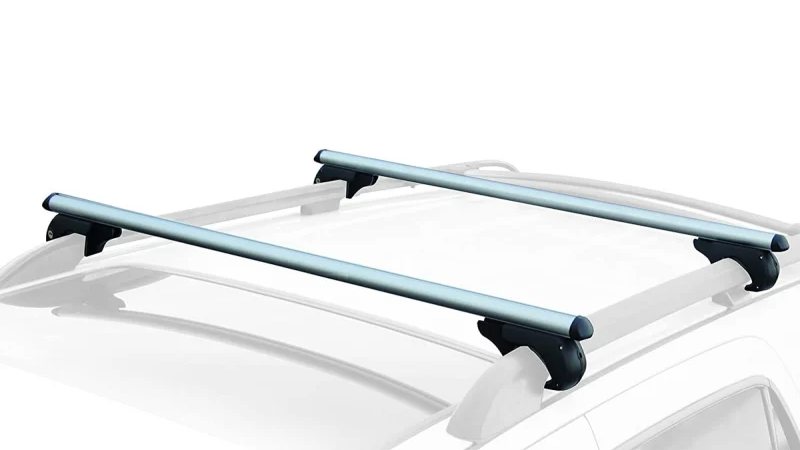
What are Roof Racks?
Roof racks, on the other hand, are mounted across the roof of your vehicle, running from the driver’s side to the passenger’s side. They act as a carrier for various types of cargo, including luggage, oversized items, and sporting equipment like bikes and kayaks.
Roof racks are very similar to roof bars, but they usually have a higher load capacity and are designed to be more versatile. They are typically installed on top of your vehicle’s roof rails or directly onto a bare roof, using mounting points or clamps.
What we like
- Offers greater versatility and customization options.
- Provides a higher load capacity for carrying heavier items.
- Allows for the attachment of various accessories and equipment.
- Can be used to create a makeshift roof-top tent setup.
- Offers more flexibility for different outdoor activities.
- Provides a platform for mounting cargo boxes, bike racks, etc.
- Offers additional storage space for bulky items and gear.
What we don't like
- Can be more expensive compared to roof rails.
- Can increase wind resistance and fuel consumption.
- Requires more complex installation and assembly procedures.
- Requires additional attachments for specific accessories.
Roof Rails vs Roof Racks: Key Differences
The main difference between roof rails and roof racks lies in their orientation and mounting method. Roof rails run along the length of a car’s roof, whereas roof racks are mounted across the roof.
Roof rails are often a built-in design feature on many SUVs and wagons, while roof racks can be added to almost any type of vehicle, regardless of whether it has roof rails or not.
When it comes to cargo carrying, roof racks generally offer more versatility and higher load capacity than roof rails. However, roof rails can still be used to carry a wide range of items, especially when paired with crossbars or roof bars.
| Roof Rails | Roof Rack |
|---|---|
| Longitudinal bars that run parallel to the roofline. | Complete system consisting of a base rack and additional accessories. |
| Designed to provide a sturdy base for attaching specific carriers. | Provides a platform for mounting various attachments, such as cargo boxes, bike racks, or kayak mounts. |
| Usually factory-installed or can be added as an aftermarket accessory. | Requires installation of the base rack and additional attachments. |
| Offers a simple and streamlined design. | Offers greater flexibility and customization options. |
| Typically has a lower load capacity compared to roof racks. | Designed to carry heavier items and has a higher load capacity. |
| May have a lower profile and be closer to the roofline, resulting in less drag and potentially better aerodynamic efficiency. | Can have a higher profile and more exposed components, which may increase wind resistance and fuel consumption. |
| Generally more affordable compared to roof rack systems. | Can be more expensive, especially when additional accessories are included. |
| Often compatible with a wide range of vehicles. | May require additional attachments or adapters to fit certain vehicles properly. |
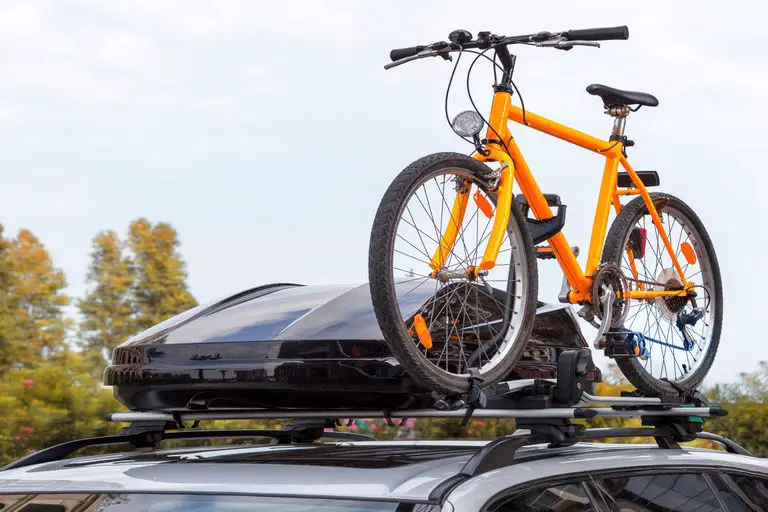
Roof Rails vs Roof Racks:Key Factors to Consider
Before deciding between roof rails and roof racks, there are several factors you should take into account. Let’s explore these factors in more detail.
1. Vehicle Compatibility
One of the primary considerations is the compatibility of the roof rails or roof rack with your vehicle. It’s crucial to ensure that the chosen option is designed to fit your specific make and model. Most vehicles are compatible with roof rails, as they often come as a standard feature or can be added as an accessory. However, roof rack systems may require additional attachments or adapters to fit certain vehicles properly.
2. Load Capacity
Another important factor is the load capacity you require. Different vehicles and systems have varying weight limits. Roof rails typically have a lower load capacity compared to roof racks. While roof rails can generally handle lighter loads, roof racks are designed to carry heavier items. If you plan on transporting larger or heavier equipment, a roof rack system might be the better choice.
3. Versatility and Customization
Consider how versatile you want your roof-mounted system to be. Roof rails offer a simple and streamlined design, providing a solid base for specific carriers. On the other hand, roof racks offer greater flexibility and customization options. With a roof rack system, you can attach various accessories and configure the setup based on your specific needs. This versatility can be especially beneficial if you engage in different outdoor activities.
4. Ease of Installation
Ease of installation is another crucial factor to consider. Roof rails are often factory-installed or require minimal assembly, making them relatively straightforward to set up. Roof racks, however, may involve more complex installation procedures, especially if additional attachments or accessories are required. If you prefer a hassle-free setup, roof rails might be the more convenient option.
5. Cost Considerations
Budget is an essential aspect when choosing between roof rails and roof racks. Generally, roof rails tend to be more affordable compared to roof rack systems. Roof racks, especially those with additional accessories, can be more expensive. Consider your budget and weigh it against the features and capabilities you require. It’s essential to strike a balance between cost and functionality.
6. Aerodynamic Efficiency
Aerodynamics play a crucial role in fuel efficiency and overall vehicle performance. Both roof rails and roof racks can have an impact on aerodynamics, potentially increasing wind resistance and fuel consumption. However, roof rails typically have a lower profile and are closer to the roofline, which may result in less drag compared to roof rack systems. If aerodynamic efficiency is a significant concern, roof rails may be a preferable choice.
Our Top 3 Picks of Roof Rails & Roof Racks
1. Yakima JetStream Aerodynamic Crossbars

We bought Yakima JetStreams for our personal vehicle. The company’s 40-year history, limited lifetime warranty, and high-quality, creative products beat Thule.
After five years on a Mazda 5, the JetStream roof rack still looks new. We bought Skyline towers to fit into the bar ends and four Landing Pads to securely affix to the factory roof attachment points since this minivan didn’t have factory rails. It cost about $450 in 2016, but we’ve used them a lot and like how securely they lock and unlatch from the roof. They can be worn or removed in the time it takes to walk around the automobile.
After assembly, we just check pad tightness once a year. They reduce wind noise and gas mileage by less than 1 MPG.
With several unique attachments and 50-, 60-, and 70-inch widths, the Yakima ecosystem is compatible. The Yakima JetStream Crossbar is a durable, aerodynamic roof rack crossbar.
2. Thule Wingbar Evo Roof Rack System

Competing directly with Editor’s Choice Thule’s Wingbar Evo Roof Rack, Yakima, reduces highway noise while maximizing capacity. Like the Yakima, you must construct the right automobile accessories. Thule has several accessories, from baggage baskets to fishing rod holders to rooftop tents.
Thule cross bars, made of lightweight materials, can hold up to 165 pounds, similar to most roof racks. It can also support big gear and bags. Thule’s roof rack cross bars are easy to install and feature their AcuTight Tensioning Tool to check rack security.
Thule, a Swedish corporation, uses renewable energy to build most of its goods in the US and Europe and offers a limited lifetime warranty.
3. Inno Surf, Kayak, Canoe and SUP rack

This Inno roof rack holds kayaks, canoes, windsurf boards, paddleboards, SUPs, longboards, and shortboards. The universal Inno Racks Water Sports rack fits round, square, and factory roof rails. It locks differently, too. This mounts water sports gear quickly and securely.
This roof rack saves time and is practical with the largest lever and ratcheting mechanism in its class. To keep gear locked to the rack, it uses Inno’s cam locking mechanism with keys. The floating strap system secures cargo and makes unloading easier. Inno’s cross-rail padding and adjustable corner pads shield your gear from scratches. Fishing rods, especially surf rods, might be firmly attached.
4. SportRack Complete Roof Rack System

This was every roof rack in the 1980s: Today, square (and round) bar roof racks are rare. Thule and Yakima aero bars aren’t popular with fuel-efficient car owners because they’re more aerodynamic. However, square bars are still useful for carrying specialist sports gear or older cars without a pricey attachment system. The SportRack Complete Roof Rack System is a good flat roof rack. It mounts without roof rails or mounting points as a complete system.
This 130-pound system adapts to the square bar’s flat shape. It fits with box-style, bike, ski, snowboard, and kayak racks. Although inexpensive, it has modern features, including a no-tool installation, the ability to secure it to your car’s roof, and compatibility with most modern cars. This rack can be placed on the automaker-recommended position marks above the doors without roof rails.
This roof rack may be noisy and may not fit all automobiles due to its non-aerodynamic design.
5. YAKIMA LockNLoad Platform Roof Rack

Isn’t an Australian outback-tested roof rack good? The Yakima LockNLoad Platform Roof Rack is costly but versatile. Its powder-coated aluminum body has T-slots for LockNLoad accessories. Bicycle, kayak, surf, ski, and snowboard mounts fit horizontal slats. It also supports SkyRise rooftop tents. LockNLoad crossbar clamps, sold separately, are needed. An SL adapter can be used to attach it to Yakima SkyLine or TimberLine towers, but it costs extra. This roof rack requires no crossbars. It comes in various sizes for various automobiles. The automobile or truck can hold 165–330 pounds. The manufacturer offers a limited lifetime warranty.
Choosing the Right Car Roof Transport Option
To decide between roof rails and roof racks, consider what type of cargo you will be transporting and the load capacity you need. If your vehicle already has roof rails installed, this could be a deciding factor, as it may be more cost-effective to use the existing rails with crossbars or roof bars.
For those with a bare roof or who want to maximize their cargo carrying capacity, a roof rack system may be the better choice. Roof racks can be installed on almost any vehicle and are designed to securely hold a variety of cargo types, from bikes and kayaks to oversized items and camping gear.
Remember to always secure your load, regardless of the type of roof transport option you choose, and to be mindful of the cargo weight limit of your vehicle.
In short, both roof rails and roof racks are fantastic options for expanding your vehicle’s carrying capacity and transporting goods safely. By considering your specific needs and preferences, you can find the best roof transport option that gives you maximum cargo weight and versatility for your adventures.
Roof Rails vs Roof Racks: FAQs
Q. Can I install roof rails or roof racks on any vehicle?
While many vehicles are compatible with roof rails or roof racks, it’s essential to check the specifications and recommendations for your specific make and model. Some vehicles may require additional attachments or modifications to accommodate these accessories properly.
Q. Can I use roof rails and roof racks together?
In most cases, roof rails and roof racks serve the same purpose. It’s not necessary to use both simultaneously. If your vehicle already has roof rails, you can attach carriers directly to them. However, if you prefer the versatility and customization options offered by a roof rack system, you can remove the roof rails and install a roof rack instead.
Q. Are roof rails or roof racks difficult to install?
Roof rails are generally easy to install, as they are often factory-installed or require minimal assembly. Roof racks may involve more complex installation procedures, especially if additional attachments or accessories are required. However, many roof rack systems come with detailed instructions, and professional installation services are also available.
Q. Are there any safety concerns when using roof-mounted systems?
When using roof rails or roof racks, it’s important to ensure proper installation and secure attachment of carriers or equipment. Always follow the manufacturer’s guidelines and recommendations for weight limits and load distribution. Additionally, be mindful of the increased height and potential for clearance issues, such as low-hanging obstacles or structure.
Q. Can I use roof rails or roof racks on a vehicle with a sunroof?
Yes, roof rails and roof racks can typically be used on vehicles with a sunroof. However, it’s essential to consider the available space and clearance between the sunroof and the roof-mounted system. Be cautious when opening or tilting the sunroof to avoid any interference or damage.
Q. Do roof rails or roof racks affect fuel efficiency?
Both roof rails and roof racks can have an impact on aerodynamics, potentially increasing wind resistance and fuel consumption. However, roof rails typically have a lower profile and are closer to the roofline, resulting in less drag compared to roof rack systems. To minimize the impact on fuel efficiency, consider removing the roof-mounted system when not in use.
Roof Rails vs Roof Racks: Final Thoughts
Roof rails and roof racks offer valuable solutions for expanding the storage capacity of your vehicle. While roof rails provide a sturdy and streamlined base for specific carriers, roof racks offer versatility and customization options. When deciding between roof rails and roof racks, consider factors such as vehicle compatibility, load capacity, versatility, installation ease, cost, and aerodynamic efficiency. By carefully evaluating these aspects, you can make an informed decision and choose the option that best suits your needs. Whether you opt for roof rails or a roof rack system, you’ll be well-equipped to transport your belongings and embark on exciting adventures with confidence.
